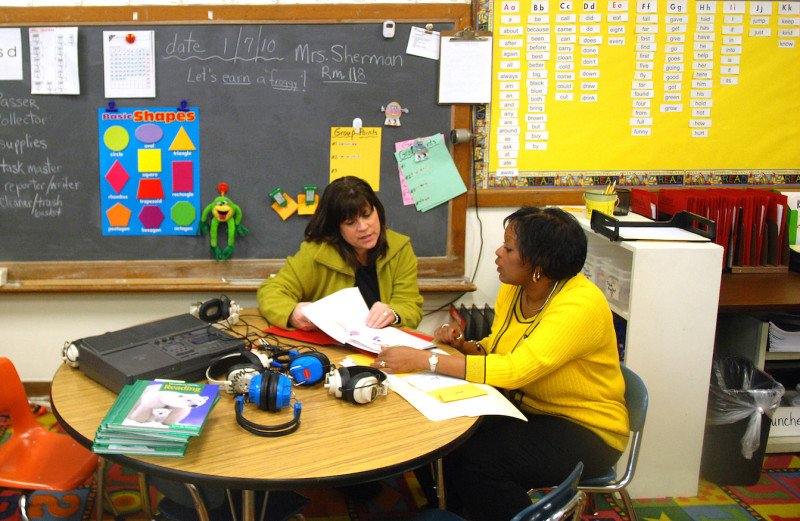 If there is one thing that staunch union members and steadfast school district officials agree on, it’s this: Recruitment and retention of good teachers is key to operating successful schools. The Peer Assistance and Review (PAR) program is proof.
If there is one thing that staunch union members and steadfast school district officials agree on, it’s this: Recruitment and retention of good teachers is key to operating successful schools. The Peer Assistance and Review (PAR) program is proof.
Kathy Castle is president of the Elgin Teachers Association (ETA) in Illinois, where PAR got it start in 2012 following two years of planning. “[PAR] is the best method for a struggling teacher to truly learn if there is a future for them in the classroom,” Castle says. “It is the least disruptive process, and one of professionalism and collaboration.”
The program utilizes a joint labor-management team—called a “PAR panel”— the skills of novice teachers and veteran teachers in need of intervention because they are not performing at a level deemed acceptable by their district.
Participating teachers volunteer to work with CTs for one or two years. For some CTs, their involvement in PAR propels them into a prosperous teaching career. For others the interactions can lead to a sub-standard evaluation by panel members and an invitation to resign. Regardless of the outcome, union and district panelists are aligned by the common goal of supporting teachers in need and work closely with each other and the CT.
“Research shows that teachers learn their craft best from other teachers,” says Bonnie Cullison, vice president of programs for the NEA Foundation, which has provided grants to several local Associations with PAR programs.
“PAR programs allow for job-embedded support where teachers in need get real-time feedback on lessons and support in how to measure learning,” she says. “For the union, there is a significant benefit in being a partner in (PAR). It goes a long way to professionalizing teaching.”
Shelley Potter, president of the San Antonio Alliance of Teachers and Support Personnel (SAATSP) in Texas, says there are times when a teacher’s contract is not renewed. Although they “ obviously have the potential to succeed,” she says, “ the simply did not get the support they needed.”
The San Antonio PAR program, which includes 15 panelists, is in development with a roll out planned for fall of 2016. Potter says PAR is a way of “owning our own profession” and determining jointly with district officials who is best suited for the San Antonio Independent School District.
“We want to maintain high standards for our district,” she says.
While PAR has not been adopted widely, it has thrived in places like Toledo, Ohio, and Montgomery County, Md. And staff and members of Nevada’s Clark County Education Association (CCEA) have helped to hire 16 consulting teachers to work with 200 new teachers at 22 schools.
“The goal of the program is to support great instruction and to retain teachers in our highest-needs schools,” says CCEA vice president Theodore Small.
Jeron Shelton has worked with 40 teachers since he started as a peer consulting teacher (PCT) three years ago at Elgin School District U-46 in Elgin, Ill.
“The most gratifying aspect of being a PCT is being able to see how teaching truly influences student learning,” says Shelton. A member of the Elgin Teachers Association, Shelton is one of four Elgin PCTs who work with six veteran and 11 new teachers.
“One of the biggest challenges is making sure that the teacher, administrator, and I are working as a cohesive team,” he says. “If all parties don't work together, students suffer and potentially good teachers leave the profession.”
______________________________________________________
The NEA Foundation’s Institute for Innovation in Teaching and Learning has played a vital role in the development of PAR programs, particularly regarding the establishment of labor-management teams between local unions and school district leaders. These collaborative efforts strive to improve schools and other education environments by connecting local leaders to national resources, sharing online curriculum on labor-management issues, designing and implementing professional development systems for teachers, and training evaluators to support new and struggling educators. Opportunities for participation in foundation programs can be found here








